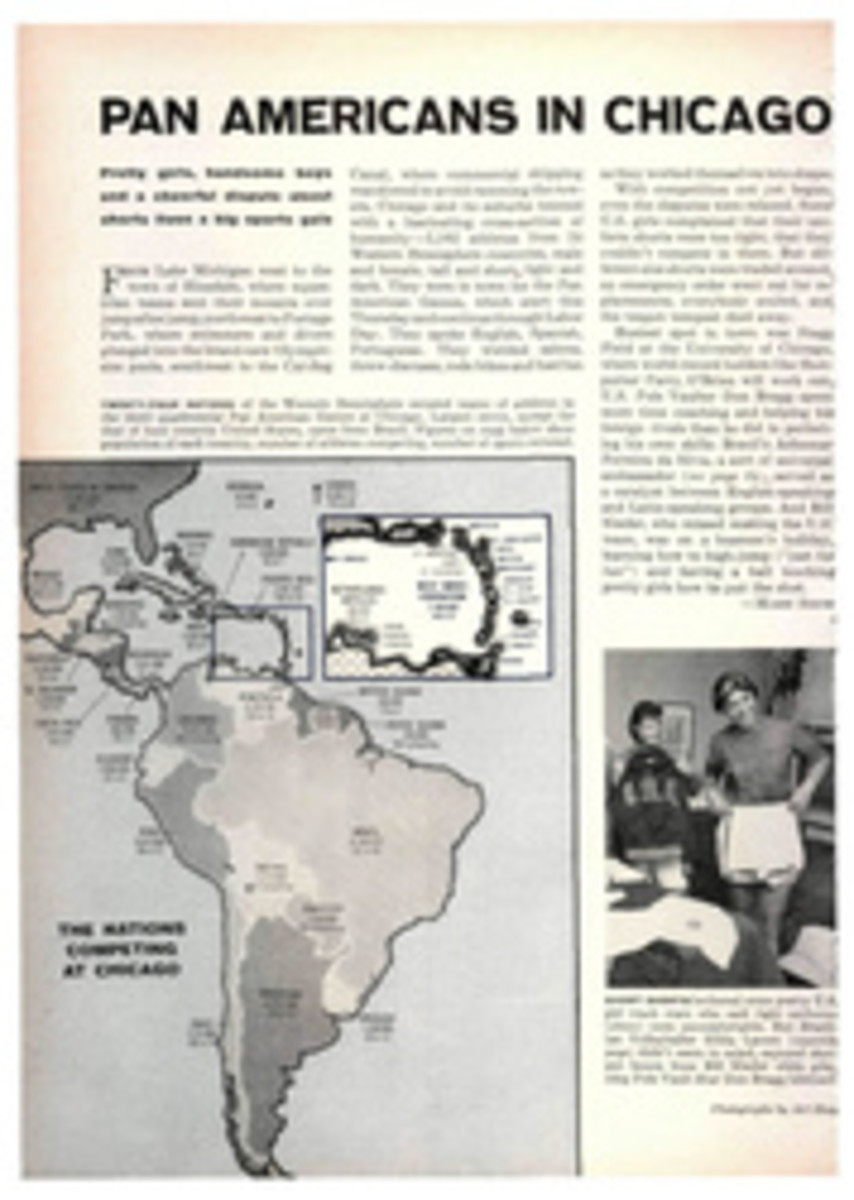
The peregrinations of pizza
The colorful wheels of savory pastry on the opposite page had their origin in southern Italy a long time ago. Pizza means simply pie in Italian. But today the word is translated by millions of enthusiasts in 50 American states as something on the order of a slice of heaven. So popular has the dish become in recent years that it is considered a threat to the hamburger and the hot dog as the great American snack.
Anyone who has ever tasted pizza is likely to be an expert on the reasons for its success. One of my teenage daughters thinks there is something romantic about it. "It's Italian," she says. "That makes it sort of exciting." Her crowd seldom spends an evening at the movies that isn't capped by the cooperative demolition of a 21-inch circle of crisp crust and herby tomato sauce. Perhaps it is the sharing the best explains the pizza rage. A pizza is a moment of pleasure to be divided, and the climax of appreciation comes when the sizzling pie arrives from the oven and young heads bend together as it is cut into wedges.
In Italian Food, the distinguished English culinary authority, Elizabeth David, says that a whole book could be written about what she calls "the pizza tribe." From Naples, hailed as the pizza capital of the world, dozens of varieties have spread throughout Italy and into southern France. In Sicily the native pizza is a luxurious affair concocted of fresh ewe's milk cheese, spicy sausage, anchovies, tomatoes, olives and orégano. One Riviera version is called pissaladiera and is filled with a mixture of Spanish onions, anchovies and black olives. In a tiny village on the Gulf of Salerno one of the kings of Italy loved to play hooky from his princely duties to gorge himself on the wares of the Pizzeria di Ponte di Campania, where the pizzas were divided north to south and east to west and the four quarters filled with four different sauces.
The oldest pizzeria in the United States is at 53 Spring Street in New York City, where a Neapolitan named Gennaro Lombardi set up a wood- and coal-burning pizza oven in 1905. Lombardi, whose sons have succeeded him, was something of a pizza evangelist, catering first to fellow countrymen who settled in New York's Little Italy, then to curious American tourists. For years he gave away postcards which were mailed by enthusiastic discoverers of pizza to their friends in various parts of the country. The flavor of pizzas tasted at Lombardi's, and at other pizzerias in New York and New England Italian neighborhoods, gradually permeated the nation.
The demand for pizza is so great that in one Middle Western city where the foreign influence is Scandinavian rather than Italian almost 100 pizzerias have opened in the last three years. A leading restaurant equipment supplier in New York estimates that the sale of paraphernalia for making pizzas now comprises 70% of his business. And surveys of national appetite trends have caused at least three food packagers to develop pizza mixes that provide bread dough and tomato sauce all ready to form into a pie.
At our house we've used a refrigerated package and found it excellent. In this, yeasty bread dough slips easily out of its tubular container, and the flat dough can then be shaped quickly to fit a 12-inch pie tin. Though the accompanying can of sauce is simple and good, we amuse ourselves by devising our own fillings—which can range from tomatoey mixtures of mushrooms and ham to shrimps and tomatoes or mussels and tomatoes, always topped with cheese. That teen-ager I mentioned plans pizza-making parties at which the guests enjoy themselves by putting together their own mixtures and then standing by while the hot oven turns dough and filling into the most marvelously aromatic of pies. "It's exotic," she says, "don't you think?"
I agree. Below, as a sample, is a recipe for Neapolitan pizza, one of our favorites:
NEAPOLITAN PIZZA
1 can refrigerated pizza mix
¼ pound Italian salami, coarsely chopped
¼ pound mozzarella cheese
3 tomatoes, coarsely chopped
1 large onion, finely chopped
1 clove of garlic, minced
4 tablespoons finely chopped anchovies
3 tablespoons finely chopped green olives
1 tablespoon finely chopped celery
1 tablespoon minced parsley
Roll out the pizza mix according to directions and fit it to a 12-inch pan. Blend the remaining ingredients well and distribute evenly in pizza shell. Bake at 425° for 15 to 20 minutes, and serve very hot as a holiday treat on Labor Day or as a family Sunday supper.
PHOTO
LOUISE DAHL-WOLFE
BRIGHT COLORS of tomato and cheese characterize all pizzas. Fillings shown contain mushrooms (center), onion and green peppers (bottom), pimientos (top right), black olives and green peppers. Other common ingredients are sausages, anchovies.

